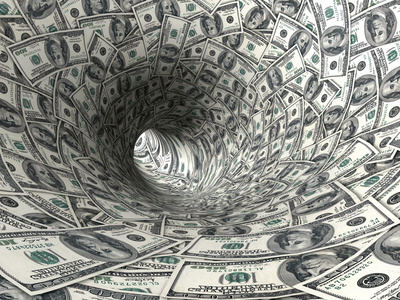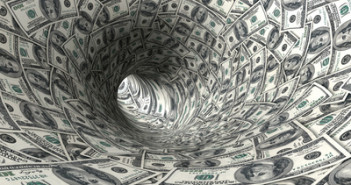Tension is mounting towards Ben Bernanke’s annual speech at Jackson Hole. A hint about QE3? A new set of tools? Or just nothing at all, just a hole? Here are 7 scenarios, and their expected impact on the greenback.
Last year, Bernanke used the speech at Jackson hole to hint about the second quantitative easing program. QE2 was officially announced in November. And now, after this program ended on June 30th and stock markets plunged, many expect him to hint about QE3. This is one of the options, but definitely not a favorable one.
The main motivation for QE2 was to fight deflation – to avoid a situation where prices drop and people wait for prices to fall. This thing has succeeded. Not only have commodity prices risen, but also Core Inflation is on the rise. There are no deflationary pressures now. Without QE2, commodity prices are falling and so are the stock markets.
The last move by the Fed was to pledge low interest rates up to mid 2013. That had a short lived effect on markets, and was met by opposition: 3 out of 10 FOMC members objected this move.
Let’s see what’s on the table for Ben Bernanke on August 26th, 14:00 GMT.
- Hints of QE3: The chances are slim due to inflation and opposition within the Federal Reserve. But, some expect Bernanke to go in this direction in order to please stock markets and “restore confidence”. In this case, the dollar will plunge.
- QE3 Limited: James Bullard of the Federal Reserve offered not to commit to long term QE3 plan, but to do it on a meeting by meeting basis. This has small chances, as the Fed prefers to lower the level of uncertainty. In this case, the dollar will drop.
- Extended QE2 Lite: While no new bonds are bought after QE2 ended, maturing assets are reinvested, keeping the balance sheet unchanged. The Fed could pledge to keep it this way and avoid tightening until mid 2013, similar to the pledge around the rates. This can moderately weaken the dollar. Chances: medium.
- Twist: The Fed could move from short term bonds to long term ones, also slowing a possible exit. This can moderately weaken the dollar. Chances: high – this is a small policy change that could provide some relief but isn’t too wild.
- Absolute 0% rate: Pushing rates to 0% would supply more liquidity, but liquidity is not the problem. The problems is that everyone is deleveraging, and the banks don’t want to lend out money. Chances are small, and the effect on the dollar will be positive (no QE).
- Targeting Nominal GDP: This means that the Fed wants serious GDP growth, regardless of inflation. In other words, allowing higher inflation to erode debt, perhaps 5%. This is a bold change of course from the past 30 years. Inflation can help erasing debt and also ignite real growth, but can also get out of control. Chances are low. The dollar will weaken in this case.
- Nothing at all: Bernanke can just speak about the sorry state of the economy, saying that all the appropriate tools are in place for now, and that he expects recovery later on. A non-event from Bernanke doesn’t mean its a non event for the markets: stock markets will crash on QE3 anticipation, and the dollar will rise on no new dollar printing. Chances are high, given rising deflation and growing opposition within the bank and also from politicians. The Fed’s options are becoming limited in these times of Great Perdition.
